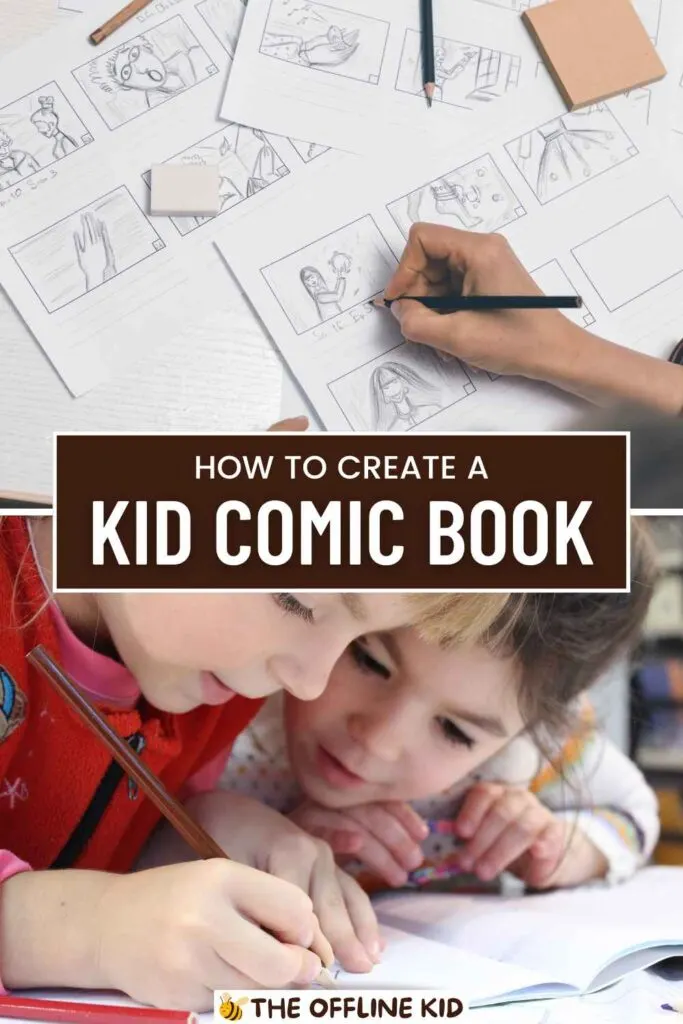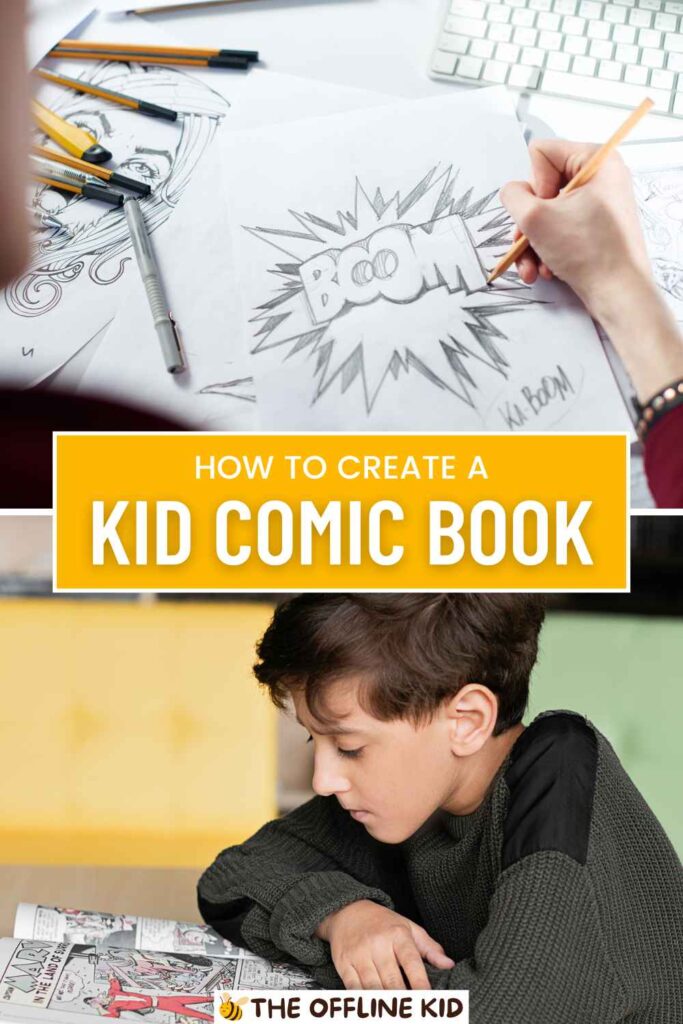Creating a comic book with your kids is a fun and educational activity that sparks creativity and storytelling skills.
This guide will take you step-by-step through the process, providing tips, examples, and encouragement along the way.
Get ready to embark on an exciting comic book adventure with your little ones!
Getting Started
Understanding Comics
Comics are a unique form of storytelling that combines visuals and text to create engaging narratives.
They can range from simple, humorous strips to complex, multi-issue epics. Understanding the basic elements of a comic book is the first step in creating your own.
Comics are made up of panels, which are individual frames that contain a portion of the story.
Panels can vary in size and shape, and the way they are arranged on a page can influence the pacing and flow of the story.
Speech bubbles are used to show dialogue, while captions often provide narration or additional information. Visuals, including characters and backgrounds, bring the story to life.
To get inspired, check out some popular comic books with your kids. Titles like “Calvin and Hobbes,” “Peanuts,” and “Bone” are great starting points.
Pay attention to how these comics use panels, speech bubbles, and artwork to tell their stories.
Gathering Materials
Before diving into creating your comic book, you’ll need to gather some essential materials. Here’s a basic list to get you started:
- Paper: A sketchpad or comic book paper with pre-drawn panels can be helpful.
- Pencils and Erasers: Essential for sketching and making corrections.
- Markers and Colored Pencils: For inking and adding color.
- Rulers: Useful for drawing straight lines and panel borders.
- Optional: Digital drawing tablets and comic book software for those interested in creating digital comics.
Keeping your materials organized can make the creative process smoother. Consider setting up a dedicated art supply box or area where everything is easily accessible.
Setting Up a Creative Space
Creating a comfortable and inspiring environment is key to fostering creativity. Find a well-lit, quiet space where your kids can focus on their work. A sturdy table with plenty of room for drawing materials is ideal.
Personalizing the creative space can also enhance the experience.
Decorate the area with posters of favorite comic book characters, or display some of your kids’ previous artwork. Having a dedicated, personalized space can help your kids feel more invested in their comic book project.
With a basic understanding of comics, the right materials, and a comfortable creative space, you’re ready to embark on the exciting journey of creating your own comic book with your kids. Let the adventure begin!
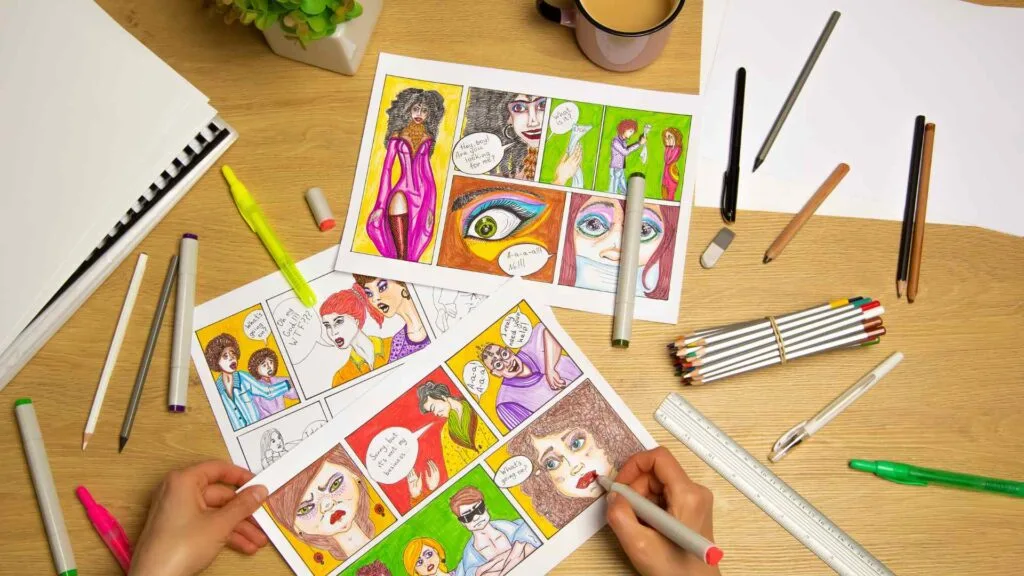
Brainstorming and Planning
Developing the Story
Every great comic book starts with a captivating story.
Begin by brainstorming ideas with your kids. Think about themes and genres that excite them—whether it’s superheroes, fantasy worlds, talking animals, or everyday adventures.
Start by creating a basic story outline. Discuss the beginning, middle, and end of the story.
What challenges will the characters face? How will they overcome them?
Encourage your kids to think about the message or moral of their story. A strong, clear outline will serve as a roadmap for the comic book.
Character Development
Characters are the heart of any story. Spend some time designing the main characters with your kids. Talk about their appearance, personality, and background.
What makes them unique? Why are they important to the story?
Create character profiles that include sketches and written descriptions. This helps in keeping the characters consistent throughout the comic book.
Encourage your kids to think about how their characters will grow and change over the course of the story.
World-Building
Setting the scene is crucial for immersing readers in your story. Discuss with your kids where the story takes place.
Is it in a magical kingdom, a bustling city, or a quiet neighborhood? Visualizing the world helps in creating a more engaging comic book.
Draw maps or simple landscapes to define the locations. Think about the details—what do the buildings look like? What kind of creatures inhabit the world?
Use examples from well-known comics to inspire and guide your world-building process.
With a solid story outline, well-developed characters, and a vividly imagined world, you and your kids are well-prepared to start bringing your comic book to life. The next step is to dive into the drawing and designing phase, where the story will truly start to take shape.
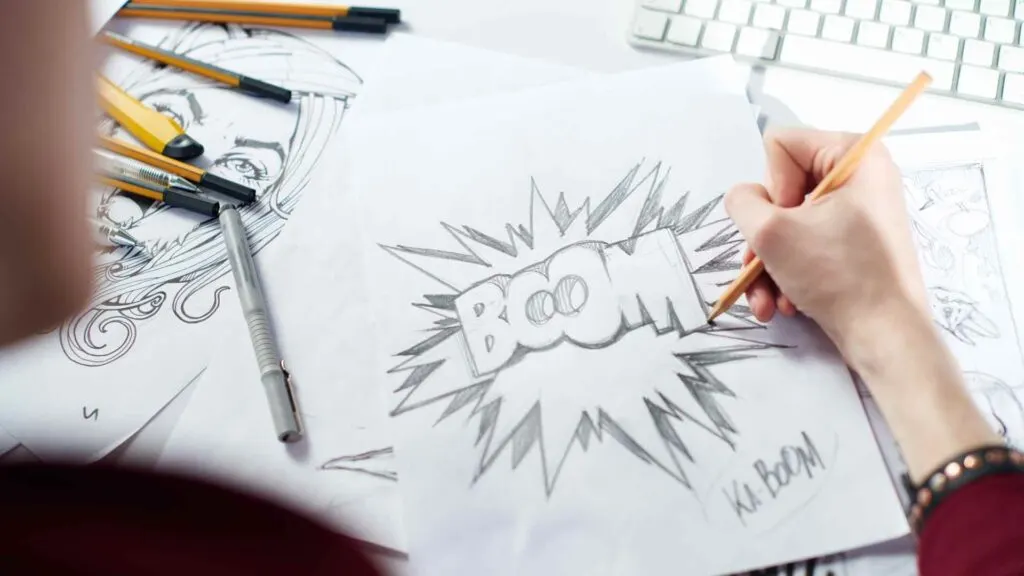
Drawing and Designing
Sketching the Panels
Now it’s time to bring your story to life through sketches.
Start by planning the layout of your comic book pages. Panels are the building blocks of your comic, and their arrangement can greatly influence how the story is read and understood.
Begin with a rough sketch of the entire page layout. Decide where each panel will go and how many panels you need per page.
Experiment with different sizes and shapes of panels to create dynamic and interesting compositions. Single panels can focus on key moments, while multiple panels can show a sequence of actions.
Encourage your kids to draw lightly with pencils so they can easily make changes. Focus on getting the basic shapes and placements right before adding details.
Look at examples of different panel styles in comic books to see how professionals arrange their panels for maximum impact.
Inking and Coloring
Once the pencil sketches are complete, it’s time to ink the drawings. Inking is the process of going over the pencil lines with a pen or marker to create a clean, finished look.
This step makes the artwork bolder and prepares it for coloring.
Teach your kids to be patient and careful while inking. It’s a good idea to use different pen thicknesses to add variety and emphasis to the drawings. For example, use a thicker pen for the outlines and a thinner pen for details.
After inking, it’s time to add color. Decide on a color palette that fits the mood and style of the story. Colored pencils, markers, or even watercolors can be used for traditional coloring.
If you’re working digitally, explore different coloring tools and techniques in comic book software.
Encourage your kids to experiment with shading and highlights to add depth to their drawings. Look at examples of colored comic book pages to understand how color can enhance the artwork.
Adding Text
Text is a crucial part of comic books, as it conveys dialogue and narration. Teach your kids how to write engaging and natural dialogue for their characters. Keep the text concise and to the point, as too much text can overwhelm the visuals.
Place speech bubbles and captions strategically within the panels. Speech bubbles should point towards the character speaking, while captions can be placed at the top or bottom of the panel. Ensure that the text is legible and doesn’t cover important parts of the artwork.
Show examples of effective text integration in comics to illustrate how professionals balance text and visuals. Practicing this balance will help your kids create a cohesive and engaging comic book.
With the panels sketched, inked, and colored, and the text added, your comic book is starting to take shape. The next step is to finalize and publish your creation, turning your hard work into a finished product you can be proud of.
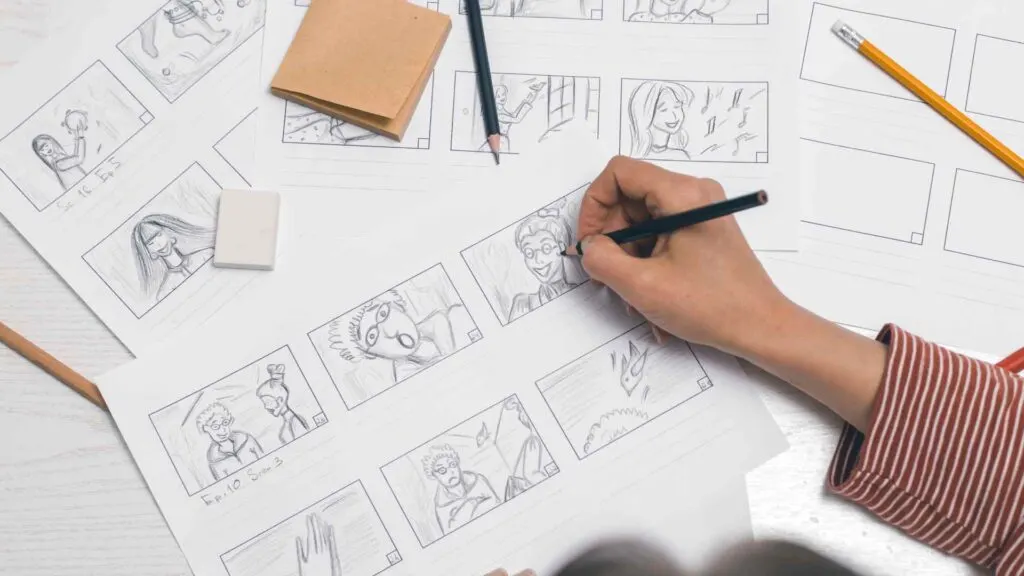
Finalizing and Publishing
Editing and Refining
Before printing or sharing your comic book, it’s important to review and refine your work. Go through each page with your kids, checking for consistency in the story, artwork, and text. Look for any mistakes or areas that could be improved.
Encourage your kids to pay attention to details such as the alignment of panels, the clarity of speech bubbles, and the consistency of character designs. Making these final adjustments will ensure a polished and professional look.
Getting feedback from others can be incredibly valuable. Share the comic book with friends, family, or teachers and ask for their opinions.
Constructive criticism can help identify areas that need improvement and provide fresh perspectives.
Printing and Binding
Once you’re satisfied with the final version of the comic book, it’s time to print and bind it. There are several options for printing:
- At Home: If you have a good quality printer, you can print the comic book pages at home. Use high-quality paper for the best results.
- Professional Printing Services: For a more polished look, consider using a professional printing service. Many companies offer affordable printing options for small runs of comic books.
After printing, bind the pages together. Simple binding techniques include stapling the pages along the spine or using a hole punch and string. For a more professional finish, you can use binding tape or a bookbinding kit.
Don’t forget to create a cover page and title for your comic book. The cover is the first thing readers will see, so make it eye-catching and representative of the story inside.
Sharing and Enjoying
Now that your comic book is complete, it’s time to share it with the world! Here are some fun ways to share and enjoy your comic book:
- Share with Friends and Family: Give copies of the comic book to friends, family, and classmates. It’s a great way to show off your hard work and creativity.
- Host a Comic Book Launch Party: Celebrate the completion of your comic book by hosting a launch party. Invite friends and family, display the comic book, and maybe even have a reading session where your kids can share their story.
- Community Libraries and Schools: Donate copies of the comic book to local libraries and schools. It’s a wonderful way to inspire other kids and contribute to the community.
- Online Sharing: Consider sharing the comic book online. There are many platforms where you can upload and share digital versions of your comic book, such as social media, comic book forums, and websites dedicated to independent comics.
Encourage your kids to continue their comic book journey. Creating a comic book is a rewarding experience that can spark a lifelong passion for storytelling and art. With each project, they’ll improve their skills and expand their creativity.
Congratulations on completing your comic book! Enjoy the moment and take pride in the wonderful creation you’ve made together.
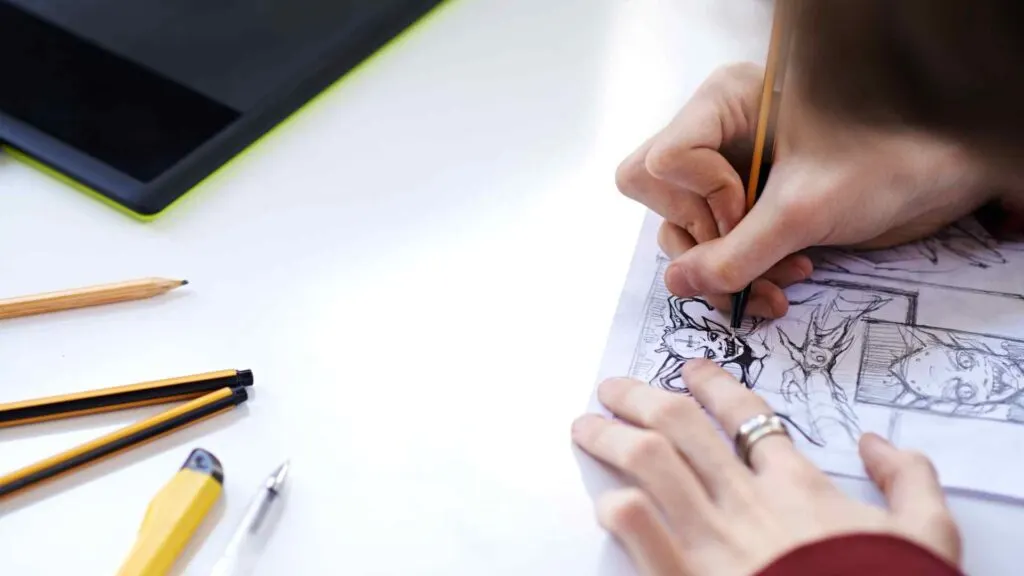
Fun Activities and Challenges
Comic Book Challenges
Making comic books is a fun way to engage your kids in creative storytelling, but adding challenges can make the process even more exciting. Here are a few comic book challenges to try:
24-Hour Comic Challenge
The 24-hour comic challenge is a fun and intense activity where you and your kids create a complete comic book in just one day.
Set aside a full day for this challenge, and see how creative you can get under time constraints. It’s a great way to encourage quick thinking and spontaneous storytelling.
One-Page Comic Challenge
In this challenge, the goal is to tell a complete story in just one page. This can be a fun way to practice concise storytelling and focus on key elements of the plot.
It’s also a great exercise for young kids who may find creating a full comic book overwhelming.
Collaborative Comic Challenge
Get the whole family or a group of friends involved in creating a comic book. Each person can contribute by drawing different panels or writing different parts of the story.
This collaborative effort can lead to unexpected and delightful results, fostering teamwork and shared creativity.
Comic Book Games
Incorporating games into the comic book creation process can make it more enjoyable and interactive. Here are some fun comic book-related games to try:
Comic Book Scavenger Hunt
Create a list of items, characters, or themes commonly found in comic books, and see how many your kids can find in their favorite comics.
This game helps them analyze and appreciate different storytelling techniques and elements.
Character Design Contest
Hold a friendly competition to see who can create the most interesting or unique character.
Set specific criteria, such as the most creative backstory or the most detailed drawing, and have fun judging the results.
Storytelling Relay
Start a comic book story with one panel, and then pass it on to the next person to continue the story with another panel.
Keep passing it around until the story is complete. This game encourages collaborative storytelling and creativity.
Inspiration and Resources
Finding inspiration and resources can help keep your kids motivated and improve their comic book-making skills. Here are some recommendations:
Recommended Comic Books and Graphic Novels for Kids
Expose your kids to a variety of comic books and graphic novels. Some great options include:
- “Calvin and Hobbes” by Bill Watterson
- “Peanuts” by Charles Schulz
- “Bone” by Jeff Smith
- “Amulet” by Kazu Kibuishi
- “Hilda” by Luke Pearson
Online Resources and Tutorials
The internet is a treasure trove of resources for aspiring comic book creators. Check out online tutorials, YouTube channels, and websites dedicated to comic book creation. Some helpful resources include:
- YouTube: Channels like “DrawingWiffWaffles” and “Manga Materials” offer excellent tutorials.
- Websites: Sites like “MakeBeliefsComix.com” and “Pixton” allow kids to create digital comics easily.
Joining Comic Book Clubs and Workshops Look for local comic book clubs or workshops where your kids can meet other young creators and share their work. Many libraries, community centers, and art schools offer programs focused on comic book creation.
With these fun activities, challenges, and resources, creating comic books will be an ongoing adventure for your kids.
Encouraging them to explore different aspects of comic creation and engage with a community of fellow enthusiasts will keep their passion for storytelling alive.
Conclusion
Creating a comic book with your kids is an incredible journey that combines creativity, storytelling, and artistic skills.
It’s an activity that not only brings joy but also teaches valuable lessons in planning, teamwork, and perseverance.
Let’s recap the essential steps and provide some final tips to ensure your comic book project is a smashing success.
Recap of the Steps
- Understanding Comics: Familiarize yourself and your kids with the basic elements of a comic book, including panels, speech bubbles, and captions. Look at examples of popular comics for inspiration.
- Gathering Materials: Collect essential materials like paper, pencils, markers, and optional digital tools. Keep your workspace organized and ready for creative sessions.
- Setting Up a Creative Space: Create a comfortable, well-lit, and inspiring environment for your kids to work in. Personalize the space to make it their own.
- Developing the Story: Brainstorm ideas and create a story outline. Think about the beginning, middle, and end of the story, and develop a message or moral.
- Character Development: Design and create profiles for your characters, considering their appearance, personality, and background.
- World-Building: Visualize and sketch the setting of your story. Draw maps and landscapes to define the locations within your comic.
- Sketching the Panels: Plan the layout of your comic book pages and sketch the panels. Experiment with different sizes and shapes for dynamic compositions.
- Inking and Coloring: Ink the sketches and add color using pencils, markers, or digital tools. Choose a color palette that fits the mood of the story.
- Adding Text: Write engaging dialogue and place speech bubbles and captions strategically. Ensure the text is clear and complements the visuals.
- Editing and Refining: Review the comic for consistency and clarity. Make final adjustments and get feedback from others.
- Printing and Binding: Print the comic book at home or using a professional service. Bind the pages and create a cover page.
- Sharing and Enjoying: Share the comic book with friends, family, and the community. Host a launch party and explore online sharing options.
Final Tips
- Keep It Fun: The most important aspect of creating a comic book with kids is to keep the process enjoyable. Encourage their creativity and let them take the lead whenever possible.
- Be Patient: Creating a comic book takes time and effort. Be patient with your kids and provide support and guidance throughout the process.
- Celebrate Progress: Celebrate each milestone, whether it’s completing a page, designing a character, or finishing the entire comic book. Positive reinforcement keeps kids motivated.
- Encourage Exploration: Allow your kids to experiment with different styles, techniques, and ideas. Exploration fosters creativity and helps them develop their unique voice.
Congratulations on embarking on this exciting comic book adventure with your kids! Remember, the journey is just as important as the final product.
Enjoy the creative process, and cherish the memories you create together. Happy comic book making!
